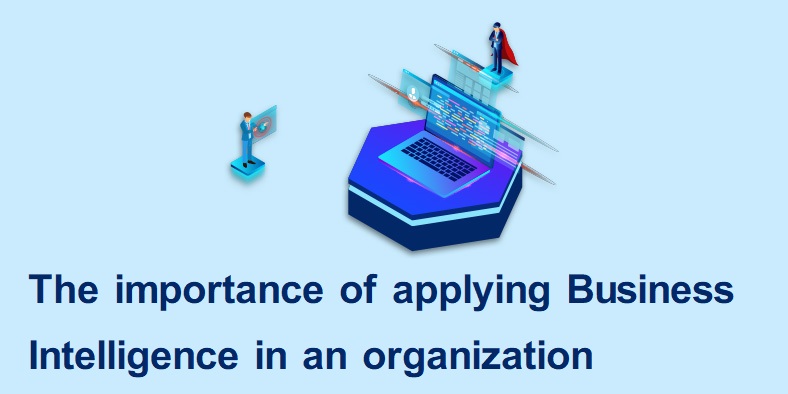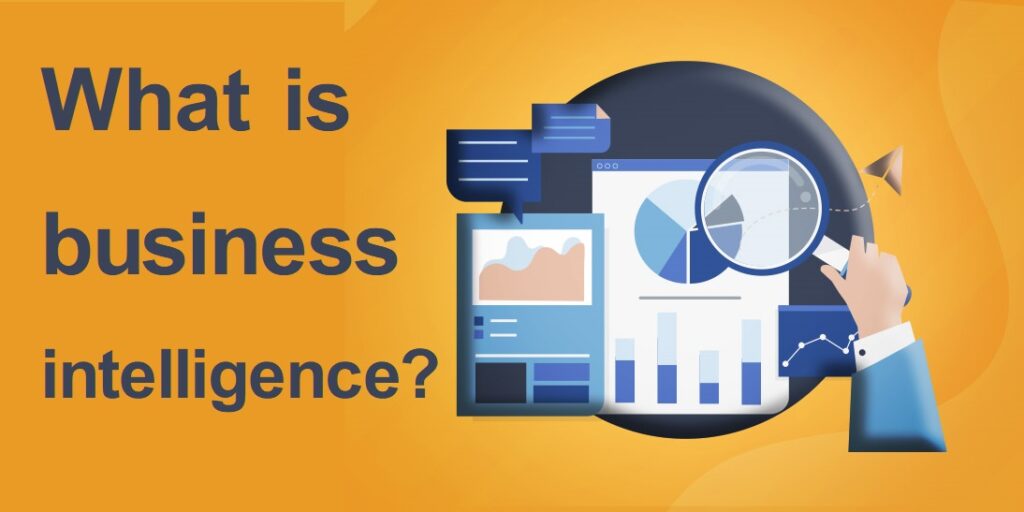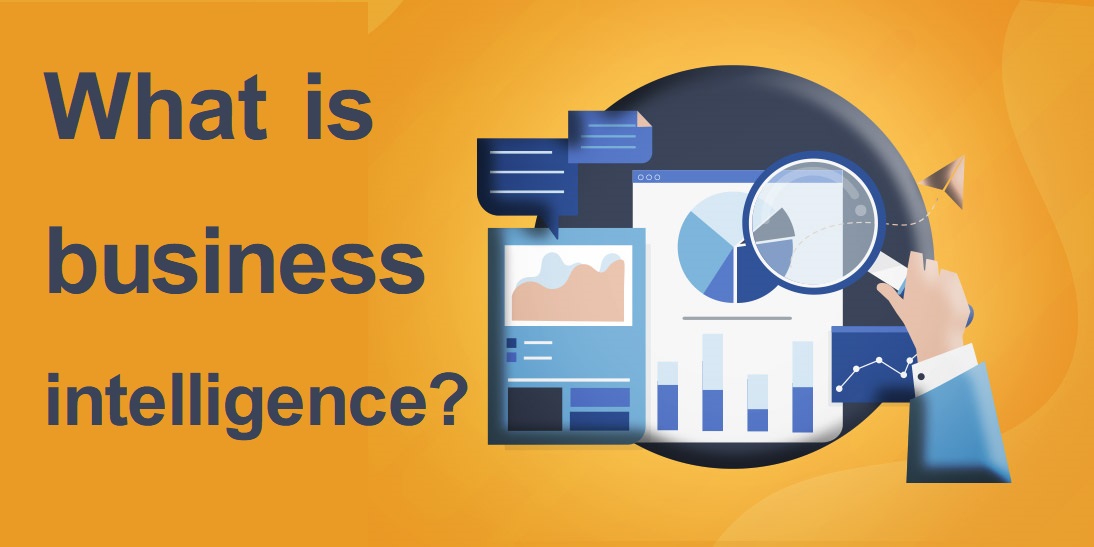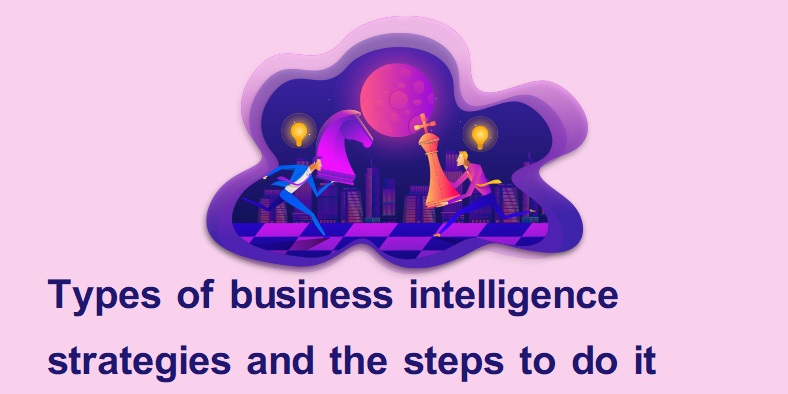What is business intelligence? Do I have Business Intelligence?
In this article, we try to explain business intelligence, types of Business Intelligence and financial intelligence in simple and clear language. If you are one of the people who are interested in this field or you are at the beginning of the path, here is the best opportunity to get acquainted with this category briefly. In the following, we will define business intelligence, types of strategies that can be implemented, methods of gathering information and benefits, and the importance of applying this field in organizations.
What is the definition of business intelligence?
Business intelligence is a technology-driven process that helps analysts make better business decisions by analyzing data and transferring practical information to executives and employees.
Part of this process involves gathering information by internal IT systems as well as external sources to analyze and review the data and transfer it to organizations, decision-makers, and business users.
The main goal here is to make better business decisions in order to increase revenue, improve efficiency and gain a competitive advantage over other business competitors. To achieve this goal, a set of information management, analysis and reporting tools are used along with various strategies for data management and analysis.
Types of business intelligence strategies and the steps to do it
If we want to name the types of business intelligence, we can mention thousands of different cases, all of which can be useful and usable.
But the key to business intelligence is your creativity.
With a variety of tools in this area, you do not have to worry about possible limitations and obstacles at all, and you can easily implement what you want.
The best strategy to take advantage of business intelligence goes back to before a project was implemented.
For example, collecting reliable data, securing data, and setting policies and how to collect data are important steps you can take for your “business intelligence” systems.
Like emotional intelligence, the use of business intelligence has a direct impact on the success of an organization. In this article, we refer to the types of business intelligence and common methods among experts in this field. In general, business intelligence consists of three general steps: data collection, data analysis, and presentation and presentation of results, which we will mention below.
Step 1: Gather information and a variety of methods
Online tools
Online surveys are the most reliable, cost-effective, and common way to obtain and extract data from a large statistical community to monetize. Because producing, distributing, and analyzing survey results manually is a very difficult and complex task; Most researchers in this field use online tools.
Face-to-face tools
Another way to gather information to save time is to conduct face-to-face interviews. For many years, this method has been the most effective way to get the most accurate information in a particular area.
Because in face-to-face interviews, indicators such as body language, tone of voice, and audience behavior are closely monitored, and the data collected are highly accurate.
This method is the most expensive method of data collection compared to other methods and the interviewer’s expertise for analyzing the behavior and conversation of the participants is very important. Posting questionnaires or telephone interviews are some of the older methods in this topic that are not used much today.
Step 2: Analyze data and information
Analytics
One of the common methods in different types of business intelligence is the analysis method, which studies the available data in order to extract meaningful concepts and existing trends.
This method is one of the most popular methods among business owners and allows them to deeply understand the current situation information and make better and more accurate decisions.
Therefore, information is collected using different strategies and methods, as well as using various software and tools, and then analyzed on them.
For example, using this business intelligence technique, an organization can identify its potential customers and gather their information in different ways, and by making the right decisions based on the data collected, turn them into real customers. Slowly
Predictive Modeling
Another method used in business intelligence is the forecasting method, which uses statistical techniques to create models to predict probabilities and trends in the future. Using this method, we can work on a specific data and its features in a specialized way and predict its course and course for future events.
Data Mining
The data mining method is commonly used to discover patterns and relationships between large amounts of data along with database systems, statistical systems and machine learning.
Since in this method, proper data structure is guaranteed, it is a complete and necessary method for information management and data preprocessing.
End users can also use this method to discover and recognize patterns. Businesses, for example, can extract and use customer relationship management system information to predict customer behaviors and find out their interests.
Model Visualization
This method is used to transfer and discover the extracted information on charts, charts, histograms and other visual models and leads to a comprehensive and clear understanding of the data.
Benefits of Business Intelligence

The application of business intelligence has a direct impact on an organization’s operational, tactical, and strategic decisions, and makes decisions based on fact-based data rather than assumptions, emotions, and assumptions. These tools analyze data, reports, summaries and charts. Here are some of the benefits of using business intelligence:
- Software and tools in this area help increase the organization’s productivity by displaying the information collected using reports and infographics.
- By dividing the organization into different sections, products and services identify and introduce areas that need more attention.
- Simplifies complex processes to make business processes simpler and more efficient.
- By displaying visual infographics and understandable reports, it becomes easier for audiences who do not even have technical expertise to understand the analysis.
- Indicates weaknesses and issues that need to be corrected in the organization.
The importance of applying Business Intelligence in an organization

Today, business environments are constantly changing and the use of business intelligence is an urgent need to compete with others. This helps the organization evaluate customer feedback and behavior, as well as market changes, and gives them a vision to grow and outperform other competitors. The important reasons for using this section by an organization are as follows:
- Raw data and information are transformed into usable information in a variety of business intelligence. Because raw data does not give you practical insight into growing your business, business intelligence does a comprehensive analysis of the data to identify weaknesses and opportunities to increase productivity.
- Using “Business Intelligence”, each component of the organization that needs attention and improvement is identified and action is taken to eliminate it.
- With the help of this type of intelligence and by recognizing the target market, the process of market changes and identifying customer behavior, the organization will achieve its marketing and sales goals. Business intelligence provides in-depth analysis to start selling, marketing, and achieving an organization’s goals.
- Attracting potential customers and interacting with them is extremely important in organizations today. By identifying customer behavior trends and getting feedback from them, valuable information is collected that leads the organization to explain appropriate strategies to increase sales.
- Many organizations are involved in traditional, old-fashioned and routine methods that hinder the growth of the organization. Business intelligence tools, by overcoming existing barriers and setting new levels of prioritization and organization, can help to improve the status quo and increase productivity throughout the organization.
Conclusion
In the end, it can be said that “business intelligence” by providing accurate and reliable information and analysis and evaluations enables organizations to be informed of good performance on a moment-by-moment basis by examining existing barriers and explaining appropriate strategies. To solve them, increase the productivity of the organization. It seems that in the not too distant future, the use of Business Intelligence and its application along with emotional intelligence in organizations will become a vital and important thing that can be used to achieve a very clear vision for achieving goals and strategies. What the organizations wanted was conceived.














